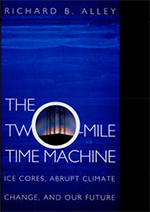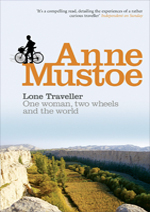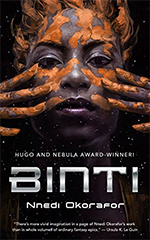A few recent reads, reviewed:
 Record of a Spaceborn Few, by Becky Chambers
Record of a Spaceborn Few, by Becky Chambers
The third science fiction novel in the Wayfarers series, this piece examines the culture of the Exodus Fleet, a group of big spaceships that contain most of the human population of Earth, running their own society with a principle idea being that they run a self-sufficient operation, meeting the needs of their populace in place, and running a closed ecological loop, recycling the dead to make soil, to grow new food to feed the living. As with Chambers’ previous books in the series, the beauty and delight of the novel comes in its explorations of character, with a brand new cast of people, most of them human, thinking about what it means to be human when you live in a human society that’s not on its planet of origin. As with A Closed and Common Orbit, the second novel in the series, I missed the plethora of aliens described in such fun Star Wars-level of detail in the original book, The Long Way to a Small, Angry Planet, but at this point I’m hooked on Chamber’s realization of a diverse, inclusive future for our flawed species, and there’s just enough alien in there to keep it spicy.
The Sparrow, by Mary Doria Russell
 A novel of interplanetary civilizations meeting, but also a novel about humans’ spiritual connection to the cosmos. The set up is that an astronomer discovers a signal from another species, living on a planet near Alpha Centauri. He shares the information with his friends, one of whom is a Jesuit priest. The Jesuit communicates the finding to his superiors, and they bankroll a modern “mission” to the planet, to explore God’s creation in the same way the Jesuits sent themselves into some of the more remote corners of the Earth. The assembled team includes both the ecclesiastical crew (three more priests get added in) as well as the circle of the astronomer’s friends, many of whom have much deeper levels of character development than him. At the center is Emilio Sandoz, the priest who feels a calling from God to engage on this journey. The novel is told in alternating chapters: both the “real-time” story unfolding on Earth, within an asteroid that they retrofit as a spaceship, and on the distant planet, which we learn is called Rakhat as well as the story told in reflection and interrogation, forty Earth years later, as Sandoz returns to Earth and Rome, and is asked to explain why everyone else is dead, and what happened to his hands (stretched out into uselessly elongated form) and why his spirit is broken. It’s a powerfully written novel, with many strong characters, thoughtful explorations on our place in the universe, and the trauma of violence on our lives.
A novel of interplanetary civilizations meeting, but also a novel about humans’ spiritual connection to the cosmos. The set up is that an astronomer discovers a signal from another species, living on a planet near Alpha Centauri. He shares the information with his friends, one of whom is a Jesuit priest. The Jesuit communicates the finding to his superiors, and they bankroll a modern “mission” to the planet, to explore God’s creation in the same way the Jesuits sent themselves into some of the more remote corners of the Earth. The assembled team includes both the ecclesiastical crew (three more priests get added in) as well as the circle of the astronomer’s friends, many of whom have much deeper levels of character development than him. At the center is Emilio Sandoz, the priest who feels a calling from God to engage on this journey. The novel is told in alternating chapters: both the “real-time” story unfolding on Earth, within an asteroid that they retrofit as a spaceship, and on the distant planet, which we learn is called Rakhat as well as the story told in reflection and interrogation, forty Earth years later, as Sandoz returns to Earth and Rome, and is asked to explain why everyone else is dead, and what happened to his hands (stretched out into uselessly elongated form) and why his spirit is broken. It’s a powerfully written novel, with many strong characters, thoughtful explorations on our place in the universe, and the trauma of violence on our lives.
 The Two-Mile Time Machine, by Richard Alley
The Two-Mile Time Machine, by Richard Alley
Penn State glaciologist/climatologist Richard Alley wrote this book as a popular account of his scientific work decoding past climatic variation (including abrupt climate change) from ice core data, particularly from Greenland. It’s an account of the how and the why of drilling through the Greenland ice sheet for information about the past, and how that ice sheet formed. The latter half of the book is a description of what that ice core information has revealed about the past few million years of climate history on our planet. In particular, focus is given to the North Atlantic, and changes in oceanic circulation that result in changes to sedimentation and isotopes. The great strength of Alley’s writing (and his general science communication) are his imaginative analogies, which feature many more hits than misses, and force the reader to think about Earth processes from a fresh perspective. Reading this has been on my list of things to do for years; I’m glad to finally have managed to make it happen.
 Lone Traveller, by Anne Mustoe
Lone Traveller, by Anne Mustoe
This is a “bicycling around the world” travel book (a favorite genre of mine) but it’s not structured as a “first I went here; then I went there, and finally I made to this other place,” as she did with her breakout travelogue, A Bike Ride. Instead, the structure of this book is thematic: what she packed, how she dealt with bureaucrats, how she found shelter, how she dealt with wild animals and predatory men. As such, it’s more like a conversation over tea with the protagonist, when a prompt leads to a series of anecdotes connected by a common thread: “But tell me, weren’t you ever scared?” “Well, there was this time in China when…” etc. In book form, I’m not sure it works as elegantly as in spoken conversation; I like my books to have a narrative arc to them, and the structure of a travelogue is familiar and uncomplicated and comfortable, but I can also appreciate why as an author Mustoe made the call to organize things differently. I’m sure it was more engaging to write for her when the vast year+ of experiences in the world were considered in terms of notable lessons that cluster around the most common queries an experienced traveler gets from those who are curious about exploring the world as a solitary woman.
 Binti, by Nnedi Okorafor
Binti, by Nnedi Okorafor
A novella set in the future about a Himba girl (from what is today Namibia or Angola), who scores well on an exam and gets a free ride to the galaxy’s best university, but she has to leave her family and home to go. She retains an important practice from her culture: the use of otjize, a mix of oil and clay that is kneaded into the hair and spread over the skin. This traditional practice is a soulful connection to her sense of self, despite her nontraditional path – but it also acts as a shield against envenomation by jellyfish-like aliens that attack her “schoolbus” ship as it crosses interstellar space. Binti also brings with her an object she found in the desert back home, which turns out to allow her to translate the medusae’s language, something no other human has been able to do. This puts a unique person into a unique position in the history of the galaxy. Is Binti up to the task? She is.

